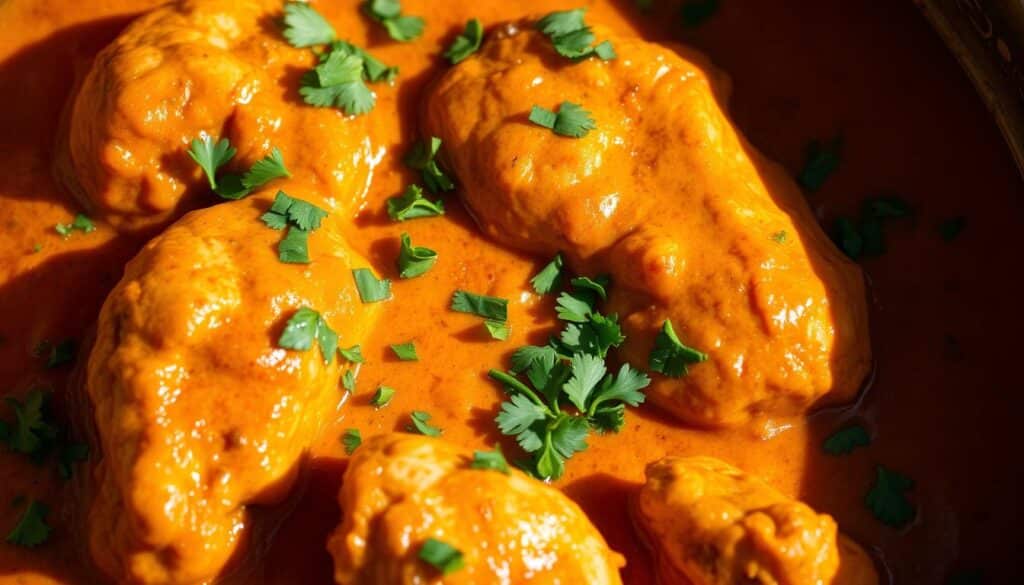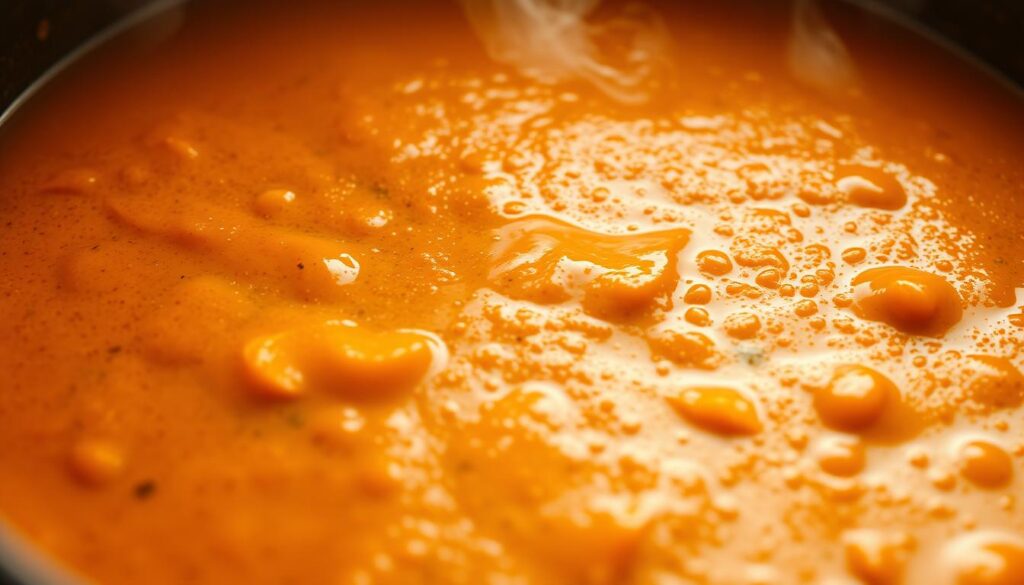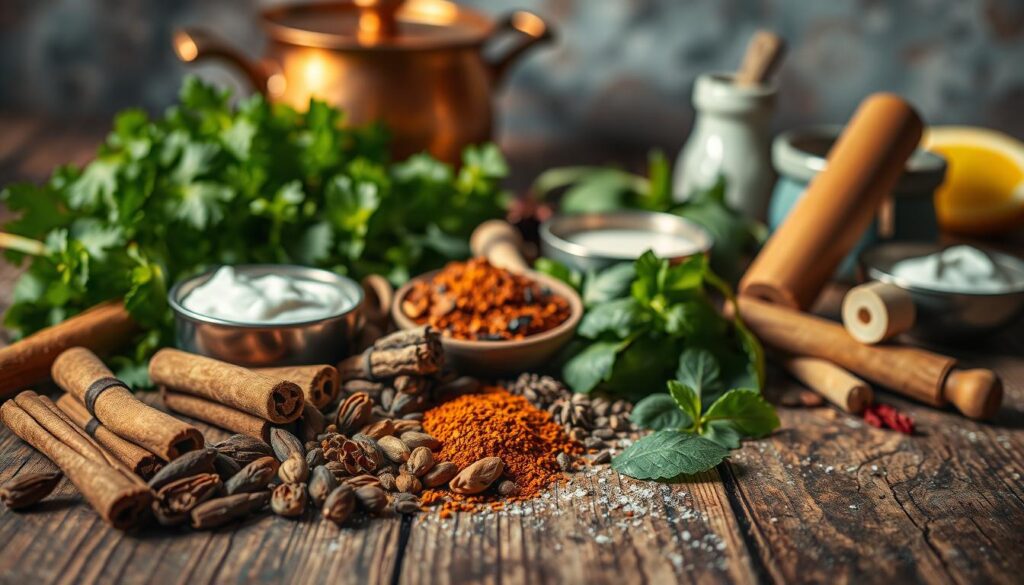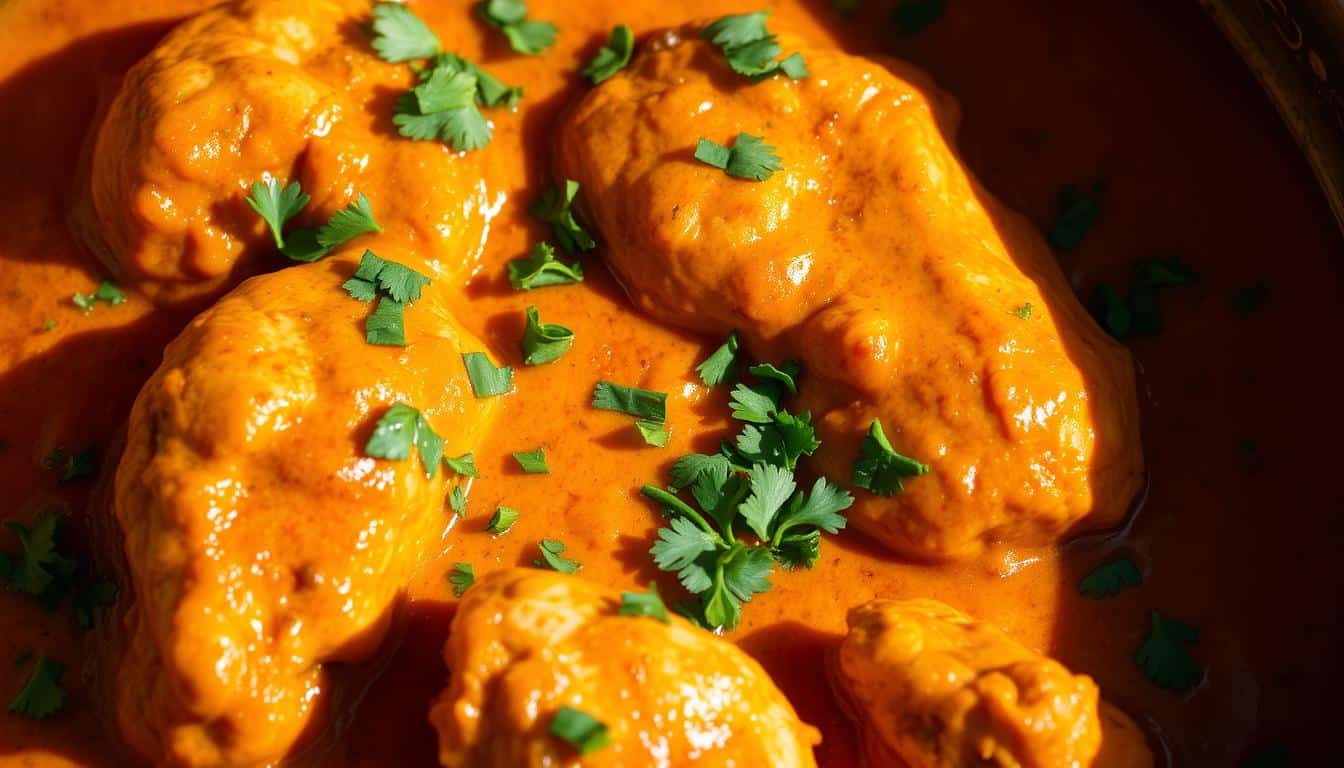There’s something special about a dish that feels like a warm hug on a chilly evening. For me, that dish is homemade chicken tikka masala. I’ve always been passionate about cooking, and this recipe holds a special place in my heart. It’s more than just a meal—it’s a celebration of flavors that never fails to bring people together.
Thank you for reading this post, don't forget to subscribe!I remember the first time I perfected this recipe. The combination of tender chicken, smoky char, and a rich, creamy sauce was nothing short of magical. It’s a dish that rivals restaurant quality, all from the comfort of your own kitchen. The secret lies in the marinade—a perfect blend of yogurt and spices that infuses the chicken with depth and tenderness.
The sauce is where the magic truly happens. A vibrant mix of tomatoes, spices, and cream creates a delightful contrast of smoky and tangy notes. Every bite is a testament to the care and love that goes into crafting this dish. Whether you’re a seasoned cook or just starting out, this recipe is designed to guide you through every step, from preparation to the final serving.
For those in the United States looking to explore authentic flavors, this recipe is a gateway to the heart of Indian cuisine. It’s a dish that’s both familiar and exciting, offering a taste of tradition with a homemade twist. And the best part? I love making this dish, and I promise you will too!

Key Takeaways
- A homemade recipe that rivals restaurant-quality chicken tikka masala.
- Features a marinade with yogurt and spices for tender, flavorful chicken.
- A creamy, vibrant sauce with smoky and tangy notes.
- Perfect for home cooks in the U.S. seeking authentic flavors.
- Easy-to-follow instructions for every step of the recipe.
Ready to get started? Check out our recipe for chicken in tomato sauce for a delicious companion dish that pairs perfectly with this meal.
Ingredients, Tools, and Essential Preparations
Creating an authentic dish begins with the right ingredients and tools. Let’s break down what you’ll need to make this recipe a success.
Key Ingredients for the Marinade and Sauce
The marinade is the heart of this recipe, and it all starts with a thick, Greek-style yogurt. This ensures the chicken stays tender and absorbs all the flavors. You’ll also need a blend of spices like garam masala and Kashmiri red chili powder to add depth and a subtle kick.
For the sauce, onions, ginger, and garlic form the foundation. Sautéing these ingredients until golden creates a rich, aromatic base. Don’t forget to add a cup of heavy cream towards the end—it’s what gives the sauce its signature creamy texture.
Must-Have Kitchen Tools and Equipment
Having the right tools makes all the difference. A large bowl is essential for mixing the marinade, while a measuring cup ensures precise amounts. Whether you’re using an oven, air fryer, or skillet, each tool helps achieve that perfect char on the chicken.
A reliable pan is crucial for simmering the sauce to perfection. Remember, using the right tools and ingredients is all about balance—just like the flavors in this dish.
Step-by-Step Process for Creating the Dish
Bringing this flavorful dish to life is a journey of layers, each step building on the last to create a harmonious balance of flavors. Let’s break it down into manageable parts.
Marinating for Maximum Tenderness
The foundation of this recipe lies in the marinade. I recommend marinating the chicken for at least 1 hour, though overnight yields the best results. This careful blend of yogurt and spices ensures each piece absorbs deep, rich flavors. The acidity in the yogurt tenderizes the meat, making it juicy and receptive to the spices.
As the chicken marinates, the spices infuse into the meat, preparing it for the next step. This step is crucial for achieving that signature tenderness.
Building the Flavors in the Sauce
The sauce is where the magic happens. Start by sautéing onions, ginger, and garlic in a pan over medium heat for about 5-7 minutes. This forms the aromatic base. Add the spices—cumin, coriander, and a touch of curry powder—and let them cook for a minute to awaken their flavors.
Next, stir in the crushed tomatoes and let the mixture simmer for 15 minutes, stirring occasionally. This thickens the sauce beautifully. Finish by adding heavy cream and a touch of sugar to balance the tanginess. Let it simmer for another 5 minutes to meld everything together.
Each cook minute matters, as it allows the flavors to develop fully. The result is a sauce that’s both creamy and vibrant.

For more tips on creating the perfect marinade, visit this guide. If you’re looking for a delicious companion dish, check out this recipe for a classic pairing.
Mastering Indian Chicken tikka masala: Pieces of chicken marinated in yogurt and spices
Perfecting this recipe is all about balance. I always start by adjusting the salt and a touch of sugar to create a harmonious flavor profile in the sauce. This balance is key to enhancing the natural sweetness of the tomatoes without overpowering the other ingredients.
A small pat of butter adds a luxurious sheen to the dish, while heavy cream brings in a velvety texture. These elements elevate the sauce, giving it a rich, creamy consistency that complements the tender chicken perfectly.
When it comes to the chicken, I prefer using high-quality chicken breast or thighs. Both options stay juicy and absorb the flavors beautifully. The marinade, with its blend of garam masala and aromatic spices, ensures each piece is infused with depth and warmth.
The choice between fresh and canned tomatoes can significantly impact the sauce. Fresh tomatoes offer a brighter, more vibrant taste, while canned options provide a deeper, richer flavor. I often use a mix of both for a balanced taste. A hint of garam notes from the spices ties everything together, creating an aromatic and inviting dish.
Every piece of chicken should be a star, so I make sure each one is coated evenly in the marinade. This attention to detail ensures that every bite is as flavorful as the last. With these tips, you’ll be well on your way to crafting a dish that’s both delicious and memorable.
Tips, Tricks, and Variations for Authentic Flavor
Elevate your homemade dish with these expert tips and tricks that bring out the authentic flavors of a classic recipe. Whether you’re a novice or an experienced cook, these insights will help you refine your technique and make the dish truly special.
Grilling Methods and Cooking Techniques
Achieving the perfect char on your chicken can be done in multiple ways, each offering a unique result. Here’s how:
- Oven Grilling: Preheat your oven to 400°F (200°C). Place the marinated chicken on a baking sheet lined with parchment paper. Bake for 25-30 minutes, flipping halfway, until golden brown and cooked through.
- Air Fryer: Preheat the air fryer to 390°F (200°C). Cook the chicken in a single layer for 15-20 minutes, shaking the basket halfway. This method yields crispy results with minimal oil.
- Skillet: Heat a skillet over medium-high heat. Add a tablespoon of oil and sear the chicken for 5-7 minutes per side until caramelized. This method adds a nice crust to the chicken.
| Method | Time | Temperature | Result |
|---|---|---|---|
| Oven | 25-30 minutes | 400°F (200°C) | Golden brown, smoky char |
| Air Fryer | 15-20 minutes | 390°F (200°C) | Crispy, even cooking |
| Skillet | 10-14 minutes | Medium-High | Caramelized crust |
Adjusting Spice Levels and Ingredient Substitutions
Customize the heat and flavor to your liking with these simple adjustments:
- Spice Level: Add a pinch of cayenne pepper for an extra kick or reduce the amount of chili powder for a milder flavor.
- Substitutions: Use half-and-half or evaporated milk as a substitute for heavy cream. For a lighter version, reduce the cream to your taste.
Serve your dish with a side of fluffy basmati rice to soak up the rich sauce. A simple trick? Add a tablespoon of lemon juice to brighten the flavors just before serving. This small step makes each serving unforgettable.

Expert Cooking Hacks and Common Troubleshooting
Achieving the perfect creamy texture in your sauce can elevate your dish from good to great. With a few simple hacks and some troubleshooting tips, you can ensure your sauce is smooth, rich, and full of flavor.
How to Achieve the Perfect Creamy Texture
One of the most common challenges when making creamy sauces is getting the texture just right. The sauce can sometimes end up too thick or too thin, which can be frustrating. Here are some expert tips to help you achieve the perfect consistency every time.
Adjusting the Fat Content
The key to a smooth sauce is balancing the fat content. I recommend using a combination of butter and heavy cream. Butter adds a luxurious sheen and richness, while heavy cream provides a velvety texture. Start by adding a small pat of butter to the sauce and then gradually stir in the heavy cream. This will help create a balanced and creamy texture without making the sauce too heavy.
Troubleshooting Common Issues
If your sauce is too thick, try adding a splash of water or broth. If it’s too thin, simmer it for a few more minutes to reduce the liquid. Medium heat is ideal for simmering, as high heat can cause the sauce to burn or become too thick. Remember, the goal is to let the sauce cook slowly so the flavors can meld together beautifully.
| Issue | Solution | Result |
|---|---|---|
| Sauce too thick | Add a splash of water or broth | Smooth, even consistency |
| Sauce too thin | Simmer for a few more minutes | Thick, creamy texture |
| Sauce too heavy | Use less heavy cream | Lighter, more balanced sauce |
Mastering the creamy texture is the secret to achieving a restaurant-quality finish at home. With these expert hacks and troubleshooting tips, you’ll be able to create a dish that’s both delicious and memorable.
Conclusion
As we wrap up this culinary journey, it’s clear that every step, from marinating to simmering, contributes to a dish that’s nothing short of extraordinary. The time spent—whether it’s an hour or overnight—unlocks a depth of flavor that makes each bite a delight.
I’m passionate about using traditional ingredients like coriander and carefully measuring spices in teaspoons to ensure authenticity. These details elevate the dish, making it a true standout.
Feel free to experiment with the tips I’ve shared—whether it’s adjusting spice levels or trying different cooking methods. I’d love to hear about your experiences and any unique twists you add to the recipe.
Thank you for joining me on this journey to master a dish that’s both beloved and timeless. Happy cooking!
FAQ
How long should I marinate the chicken for the best flavor?
For the most tender and flavorful results, marinate the chicken for at least 1 hour. If you have more time, marinating for 2-3 hours or even overnight in the fridge will enhance the flavor and texture.
Can I make the sauce ahead of time?
Yes, you can prepare the sauce up to a day in advance. Store it in an airtight container in the fridge and reheat it gently when you’re ready to cook the chicken.
What’s the best way to serve Chicken Tikka Masala?
Serve it over a bed of fluffy basmati rice or with warm naan bread for a traditional and satisfying meal.
Can I substitute heavy cream with something else?
While heavy cream gives the richest flavor, you can use half-and-half, coconut cream, or even a mixture of milk and butter as a substitute.
How do I prevent the sauce from being too runny?
Let the sauce simmer on medium heat for about 10-15 minutes to thicken naturally. You can also add a little cornstarch or flour mixed with water to help it thicken faster.
Can I make this recipe spicier or milder?
Absolutely! Adjust the amount of chili peppers or red pepper flakes to your taste. For a milder version, use just a pinch of spice or omit the chilies altogether.
How do I store leftovers?
Cool the dish completely, then transfer it to an airtight container. Store it in the fridge for up to 3 days or freeze for up to 2 months. Reheat gently on the stovetop or in the microwave.
Can I cook this in a slow cooker?
Yes! Brown the chicken and cook the sauce in a pan first, then transfer everything to a slow cooker and simmer on low for 2-3 hours for tender, flavorful results.
Why is my sauce not creamy?
Ensure you’re using heavy cream or a high-fat substitute. Stir the cream in gently and avoid boiling the sauce too vigorously, as it can cause the cream to separate.
Can I use chicken thighs instead of breast?
Chicken thighs work wonderfully and often stay juicier than breast meat. Feel free to use them for a heartier texture.
There are no reviews yet. Be the first one to write one.

